You know that I like to question WHY when things are the norm. Why do you use this, do that etc. I’ve come to notice that I always seem to use either white or black in my pours and I wondered if I needed them. What would happen if I just used colors? Let’s try it and see.

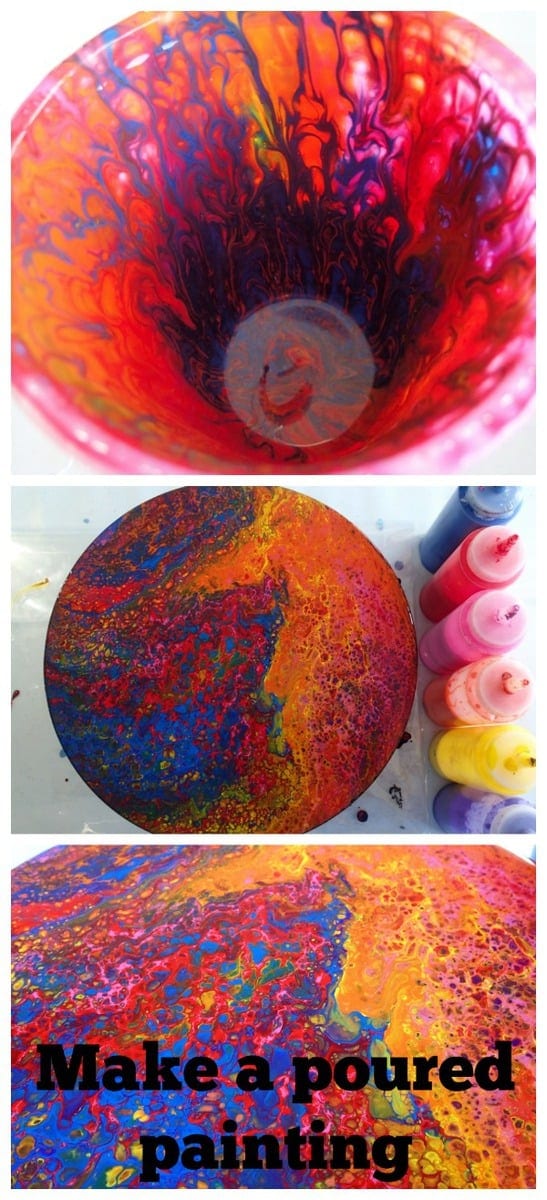
In this painting, I won’t use any white. I’ll just use the colors, throw them all in and flip. Some of them are going to be transparent so if I pour against a record, a black surface, and don’t use white in my cup as an ‘undercoat’ that sinks beneath those transparent colors, then will they dry even darker than usual? I want to know!
Materials used in this painting:
Art Alternatives acrylics in warm red, magenta, orange
Blick Student Acrylics in cobalt blue, chrome yellow, violet
Floetrol
Treadmill belt silicone oil
12 inch vinyl LP record
8oz squeeze bottles
Avery round glossy label to cover the hole
Polycrylic gloss protective finish
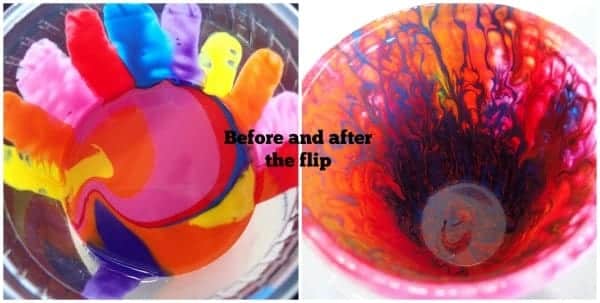 Recipe for this painting:
Recipe for this painting:
All paints were mixed approx 2 parts paint, 1 part Floetrol plus water as needed to consistency. A couple of drops of the silicone oil in each color.
So wow-zers, didn’t that look amazing and bright when it was wet. Totally gorgeous, I love bright colors. When dry, it was slightly darker but not more so than usual, so I don’t think in this case that leaving out the white made any difference to the way it dried. Sadly there are some lumps and bumps on the dried painting. I had used that same purple that gave me problems in an earlier painting. Although I had strained it twice, it seems that it still isn’t playing nice. As much as I love that color, I just might have to finally concede that it doesn’t do well for pouring for some reason.
As usual, here is a slideshow of photos from this pour, both wet and dry, and close ups of the details. Enjoy!
After being told in high school that she was so bad at art that she should switch to another subject, Deby didn’t paint again for 35 years. Then a stroke released a new wave of creativity and she began exploring with dot painting, abstract and eventually acrylic pouring, and at last the joy of working with color returned. You don’t need ‘talent’ to be an acrylic pouring artist – just enthusiasm, some basic instruction, and a willingness to try, fail and try again. Paint along with her and learn from her many mistakes, and you’ll soon make great art together.

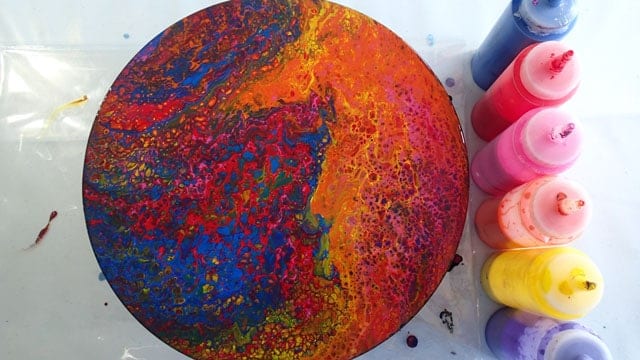
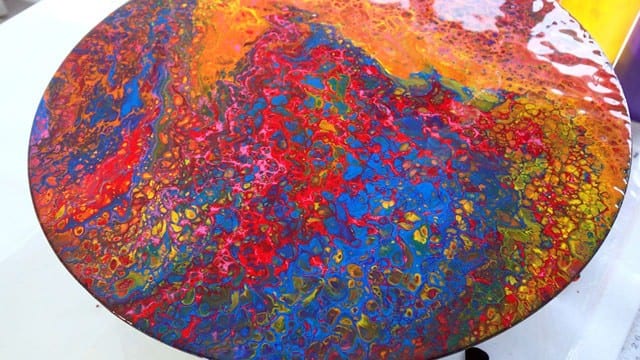
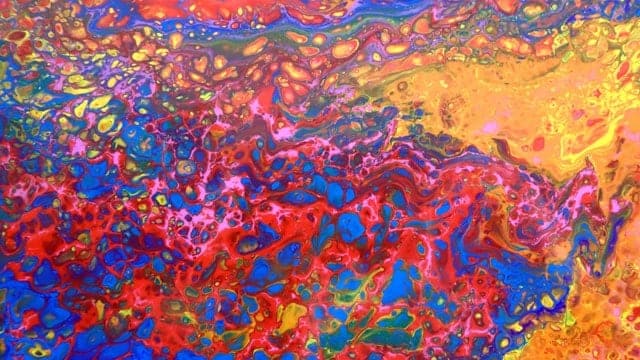
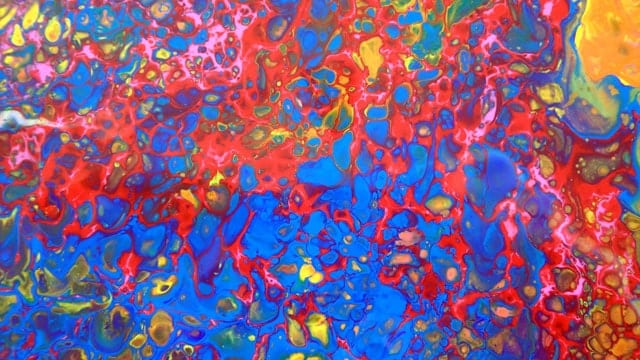
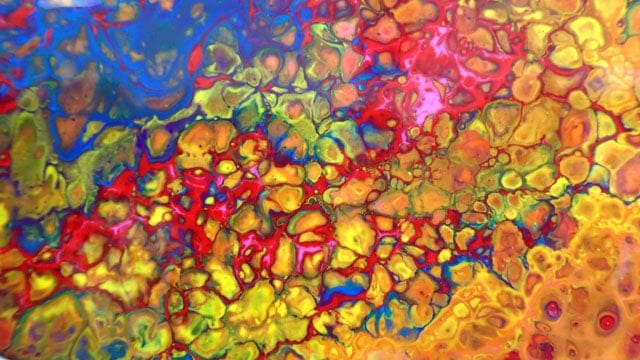
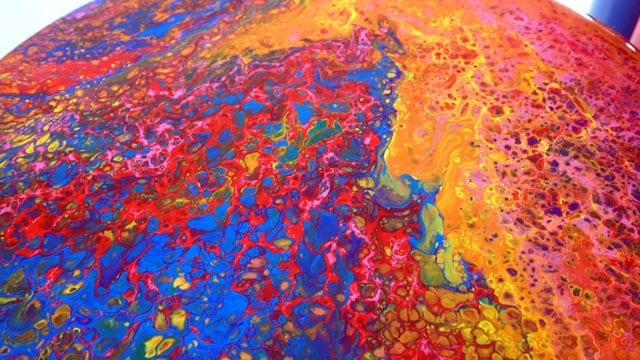
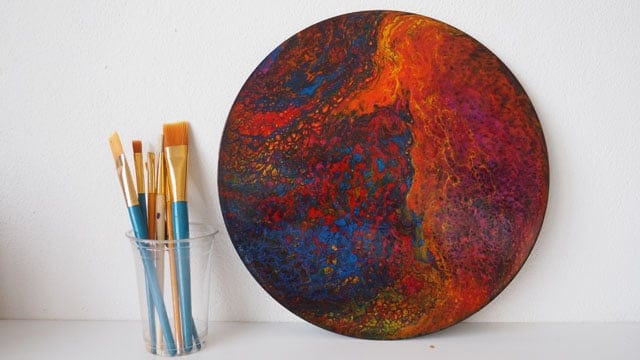
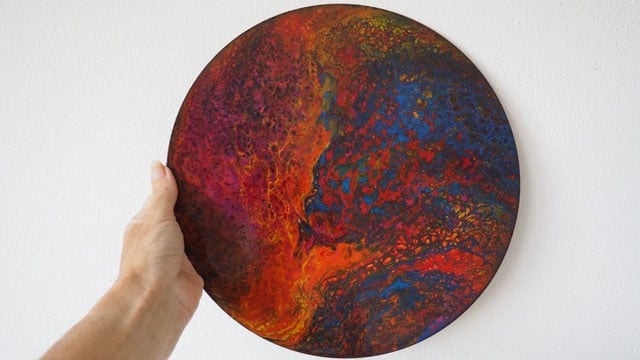
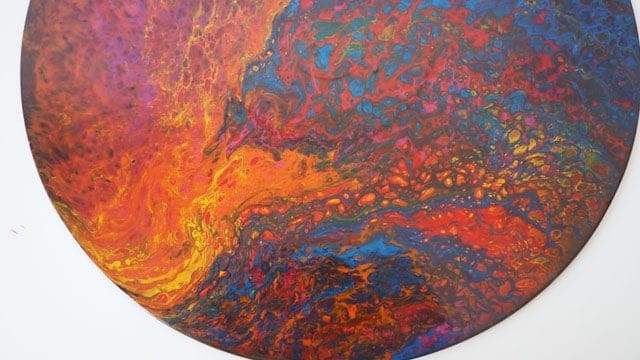
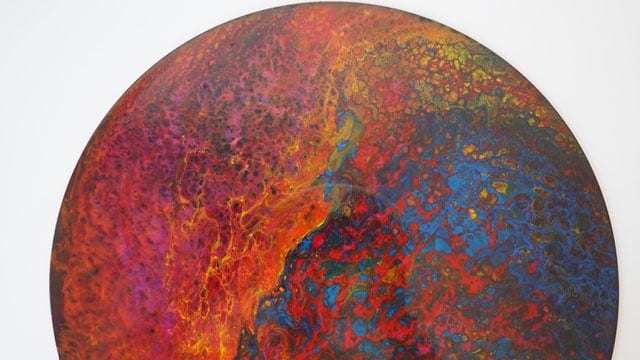
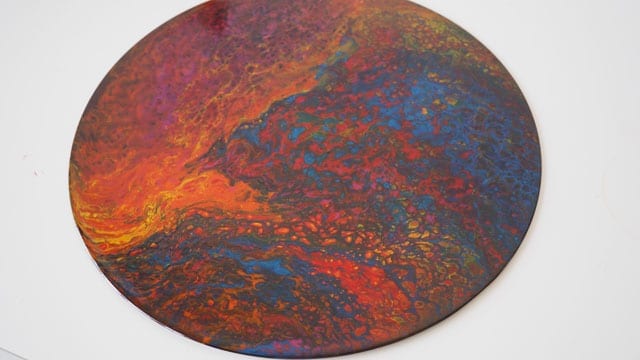
What do you use to get the black background instead of white background…
This is poured on an old vinyl record, so its already black in color. I didn’t need to do anything to it.
Love this pour. Do more like this, please! It is a delight for my eyes.
Fabulous Deby love the cells.
I have your ebook and also got your online class thank you.
Thanks so much Dawn. I appreciate your support.
I spray my records black or white with an Acrylic primer formulated for plastic, wood, etc…to cover the small circle label I apply (to cover the hole) and to cover the actual record label. Any issues with record labels bleeding through pouring directly on the vinyl. I love the bright colors! Just beautiful!
I have bought Owatrol floetrol as I live in uk and couldn’t get flood floetrol. I’m not getting good cells with it and wonder if it’s latex based as flood floetrol is. I really enjoy your videos Deby.
Carol Heys